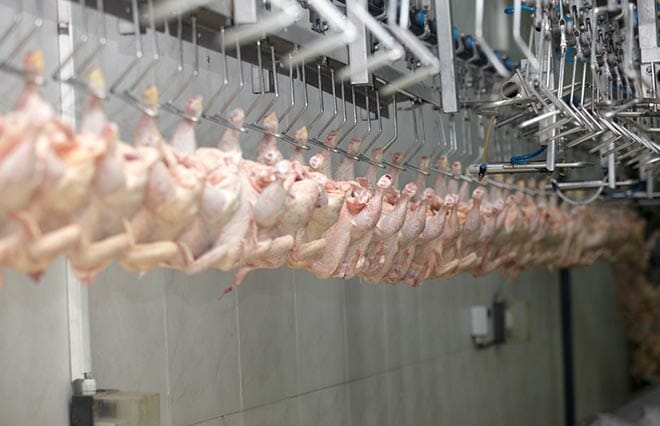To say that poultry and people are different is, of course, to state the obvious. Basic reasoning also shows that the quality of the food human beings and chickens eat has a lot to do with how healthy they are. The trick is determining what makes food good for people and poultry. For poultry, an important consideration is physiology. Chickens and children have very different digestive systems. To put it simply, humans use chemistry to break food down; poultry use physical grinding. That’s where test sieves have their place in world poultry production.
Size Makes a Difference
It turns out that, for feeding animals, food particle size can make a big difference. For poultry, size affects:
- Which particles a bird chooses to eat
- The quantity of particles eaten
- How well the bird can digest what it eats
- Offering poultry food particles of the right size not only leads to more and better feeding but also to the best kind of food “processing.”
Using test sieves to attain ideal food particle size presents a small price to pay for higher productivity. And higher productivity means happier customers for feed manufacturers and poultry producers.
Choosing the Right Test Sieve
At least three considerations should go into selecting a test sieve:
- Is the sieve easy to maintain and keep clean?
- Is the sieve constructed from materials that can withstand use in its particular application?
- Does the sieve meet the highest standards of quality?
To prevent matter from getting caught between the sieve and its frame, construction should create a smooth transition between the two parts. There should be no epoxy bead or rivets that might form traps. The frame and mesh should be made of sturdy material, such as stainless steel.
Until fairly recently, brass had been the preferred metal for test sieves, primarily because it was less expensive than stainless steel. However, because it contains copper, brass has grown more expensive, and the benefits of stainless steel, such as its greater durability and abrasion resistance have made steel more attractive.
Several methods are used to construct sieves—to connect the mesh to the frame—including:
- Pure tin soldering
- UV adhesive
- Welded construction
Pure tin soldered test sieves are well-suited to most applications. The solder leaves no residue on a sieve’s inside surface. However, the solder breaks down in the presence of caustic cleaning compounds and acid.
UV adhesive test sieves also leave little or no residue on a sieve’s inside surface. The adhesive doesn’t stand up well to high humidity or moisture.
Like UV adhesive and pure tin soldering, welded construction accommodates coarse- or fine-mesh test sieves. Overlapping of the spot welds ensures there are no gaps between the mesh and the frame.
Certification is probably the best way to determine test sieve quality. Buyers can check for a Certificate of Compliance (included in shipping), an Inspection Test Sieve Document of Certification and a Calibration Test Sieve Document of Certification.

The Simple Sieve Makes a Mighty Tool
The rules for success with sieves in poultry production systems are pretty simple:
- Find the right particle size for the poultry in question
- Determine the test sieve specifications that match the application for ease of use and durability
- Use well-made sieves with the right specifications to test particle size regularly
In a competitive market like poultry production, something as simple as sieves of the proper mesh size can mean customers experience the production they want. And satisfied customers tend to return.
For more than 105 years, Newark Wire has specialized in fabricating standard and custom wire mesh products, including test sieves. Contact the company for more information about test sieves and their poultry production applications.
